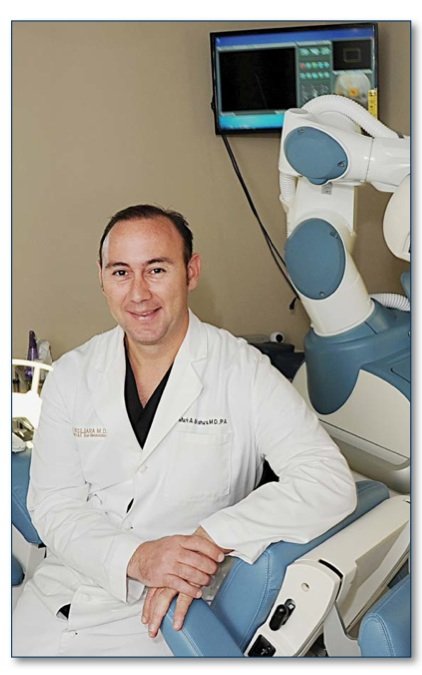Laser Hair Therapy

At the Paragon Plastic Surgery and Med Spa, we are pleased to offer the most advanced and comprehensive laser treatments available for improving the appearance of your skin and hair. Laser hair therapy is just one of our most popular aesthetic laser treatments, and we are excited to share this technology with our Dallas, Fort Worth, and North Texas patients.
How Laser Hair Growth Works
The Capillus272 uses a special type of laser light that is known to improve circulation and stimulate cellular metabolism within and around the hair follicles of the scalp. Unlike the lasers used for aesthetic skin treatments and tattoo removal, Capillus does not ablate or damage the cells of your skin. Instead, hair restoration is performed with low level lasers that are cool-to-the-touch.
Step 1: Dr. Bishara Recommends Capillus
First, Dr. Bishara recommends treatment with the Capillus hair loss laser to reverse the signs of thinning, shedding, or balding. Treatment recommendations vary, but might include 30-minute sessions every other day.
Step 2: Laser Therapy Becomes Part of Your Routine
In order to be effective, laser therapy must be incorporated into your daily routine. This is where laser caps like Capillus outshine other treatment options, like in-office domes and laser combs. The wearable and portable design of the Capillus enables comfortable, convenient, and consistent treatment for superior results.
Step 3: Hair Follicles Receive Low Level Laser Stimulation
The Capillus272 provides safe exposure to low-level laser light on a regular basis. Exposure is non-invasive and the lasers are cool, creating a hair loss treatment experience with absolutely no pain or discomfort.
Step 4: Circulation and Metabolism Improve Across the Scalp
Low level laser therapy (LLLT) is known to improve circulation and cellular metabolism across the scalp. This nourishes hair follicles along the front, top, and sides of the head—even the ones that no longer produce hair.
Step 5: Newer, Fuller Hair Grows Naturally
LLLT continues to improve circulation and cellular metabolism, delivering more blood, nutrients, and oxygen to each hair follicle. Over time, consistent use of the Capillus272 has been shown to increase hair growth by up to 51%.*
Benefits of Capillus Laser Cap
Capillus is continually recommended by world-renowned physicians as a safe, proven, and effective method of non-surgical hair restoration. Below are just a few of the benefits offered only by Capillus.
Discrete. Capillus272 is a flexible dome-like insert that fits securely within your favorite baseball cap or hat. Simply insert, wear, and enjoy the benefits of laser hair restoration with complete discretion.
Portable. Capillus272 is powered by a portable battery pack, enabling you to take your hair loss treatment anywhere.
Powerful. With 272 lasers, the Capillus272 is capable of greater energy output than any other available laser cap. Greater output delivers a higher degree of hair follicle stimulation, which can ultimately lead to better results.
Effective. In premarketing study for FDA clearance, the Capillus272 demonstrated the ability to effectively promote hair regrowth when compared to a placebo device. On average, patients experienced a 51% increase in hair counts.*
Safe. Capillus272 has been cleared by the FDA for the treatment of androgenic alopecia, or hair loss.









